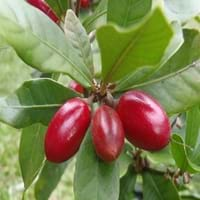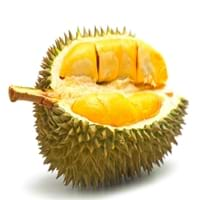Health Benefits
Good for diabetics, Improves well-being, Miraculin/miracle fruit makes sour things taste sweet
Anti depressant, Boosts immune system, Cancer prevention, Heart care, Reduces stress
General Benefits
Has taste modifying effect
Anti oxidant properties, Anti-inflammatory properties, Boosts immune system, Controls blood pressure, Controls blood sugar levels, Digestive aid, Flu treatment, Strengthens bones
Skin Benefits
NA
Anti-aging benefits, Brightens and lightens complexion
Hair Benefits
NA
Promotes longer and healthier hair, Protects hair
Allergy Symptoms
Itching, Skin rash
Diarrhea, Headaches, Hives, Nasal congestion, Red rash, Runny nose, Vomiting
Side Effects
Changes taste of food eaten after this fruit, Coagulation
Affects blood glucose levels, Nausea, Stomach pain
Best Time to Eat
As a snack in the late afternoon, Eat the fresh ones, avoid mixing with any other foods, don't eat after meal., Morning time (before lunch)
Along with meal, As a snack in the late afternoon, Don't consume at night and before bed, Morning time (before lunch)
Protein to Carb Ratio
Not Available
Vitamin A (Retinol)
Not Available
Vitamin B1 (Thiamin)
Not Available
Vitamin B2 (Riboflavin)
Not Available
Vitamin B3 (Niacin)
Not Available
Vitamin B5 (Pantothenic Acid)
Not Available
Vitamin B6 (Pyridoxin)
Not Available
Vitamin B9 (Folic acid)
Not Available
Vitamin C (Ascorbic Acid)
Vitamin E (Tocopherole)
Not Available
Water Content
Not Available
Calories in Fresh Fruit with Peel
Not Available
Not Available
Calories in Fresh Fruit without Peel
Not Available
Calories in Frozen Form
Not Available
Calories in Dried Form
Not Available
Calories in Canned Form
Not Available
Not Available
Calories in Juice
Not Available
Calories in Jam
Not Available
Type
Berry
Tree fruit, Tropical
Varieties
Gymnema Sylvestre and Thaumatococcus Daniellii
D24, D99 (Gob kecil), D123 (Chanee), D145 (Beserah), D158 (Gan Yau), D159 (Monthong), D169 (Tok Litok), D188, D189, D190, D163 (Hor Lor) and D164 (Ang Bak)
Inside Color
Greyish-white
Yellow
Taste
NA, Sweet
Creamy, Sweet
Origin
West Africa
South-Eastern Asia
Grows on
Trees
Not Available
Soil Type
Well-drained
Clay
Climatic Conditions
Rainfall
Hot, Humid
Facts about
- The name 'Miracle' because of the magical experience you get after eating it.
- When you have lemon after eating this fruit, it tastes sweet as if it is added with sugar.
- It is also used as natural sweetener.
- 1 kg of durian contains 1350 calories which may cause weight gain.
- It may have a hyperthermic effect on the body, making you feel warmer.
- Study shows that durian has an ability to reduce infertility in men & women.
Other Countries
NA
Indonesia, Malaysia, Philippines
Top Importer
Not Available
China
Top Exporter
United States of America
Thailand
Botanical Name
Synsepalum Dulcificum
Durio zibethinus
Synonym
Miracle Berry, Miraculous Berry and Sweet Berry
Lahia Hassk
Subkingdom
Tracheobionta
Tracheobionta
Division
NA
Magnoliophyta
Subclass
Asteridae
Dillenhidae
Family
Sapotaceae
Malvaceae
Species
S. dulcificum
D. zibethinus
Generic Group
Not Available
Not Available
Difference Between Miracle fruit and Durian
We might think that Miracle fruit and Durian are similar with respect to nutritional value and health benefits. But the nutrient content of both fruits is different. Miracle fruit and Durian Facts such as their taste, shape, color, and size are also distinct. The difference between Miracle fruit and Durian is explained here.
The amount of calories in 100 gm of fresh Miracle fruit and Durian with peel is Not Available and Not Available and the amount of calories without peel is Not Available and 147.00 kcal respectively. Thus, Miracle fruit and Durian belong to and category.These fruits might or might not differ with respect to their scientific classification. The order of Miracle fruit and Durian is Ericales and Malvales respectively. Miracle fruit belongs to Sapotaceae family and Durian belongs to Malvaceae family. Miracle fruit belongs to Synsepalum genus of S. dulcificum species and Durian belongs to Durio genus of D. zibethinus species. Beings plants, both fruits belong to Plantae Kingdom.









